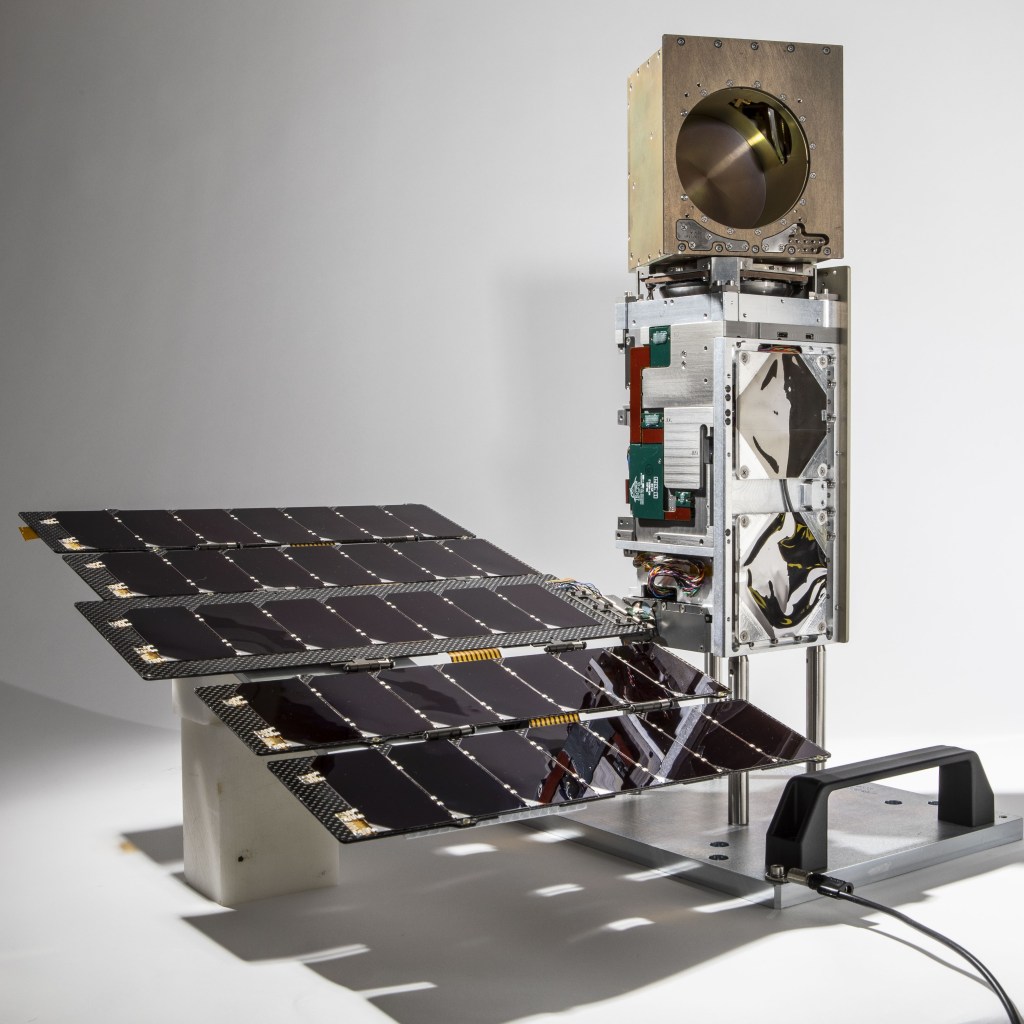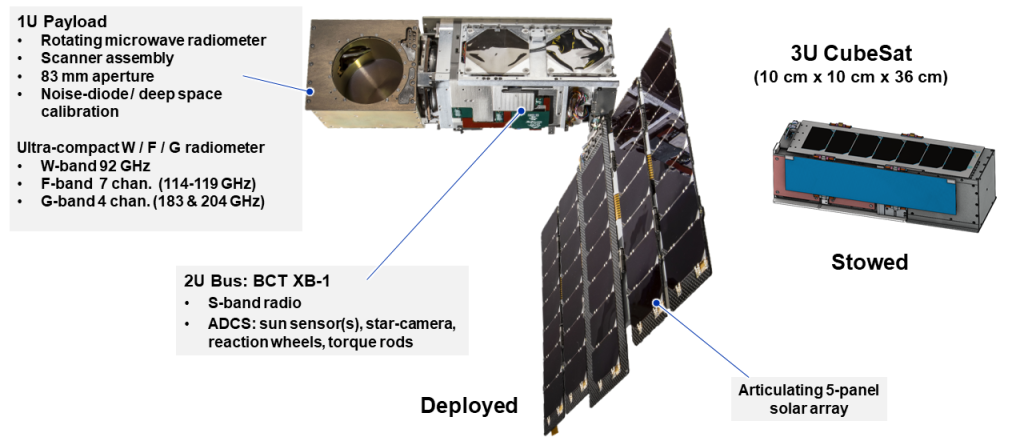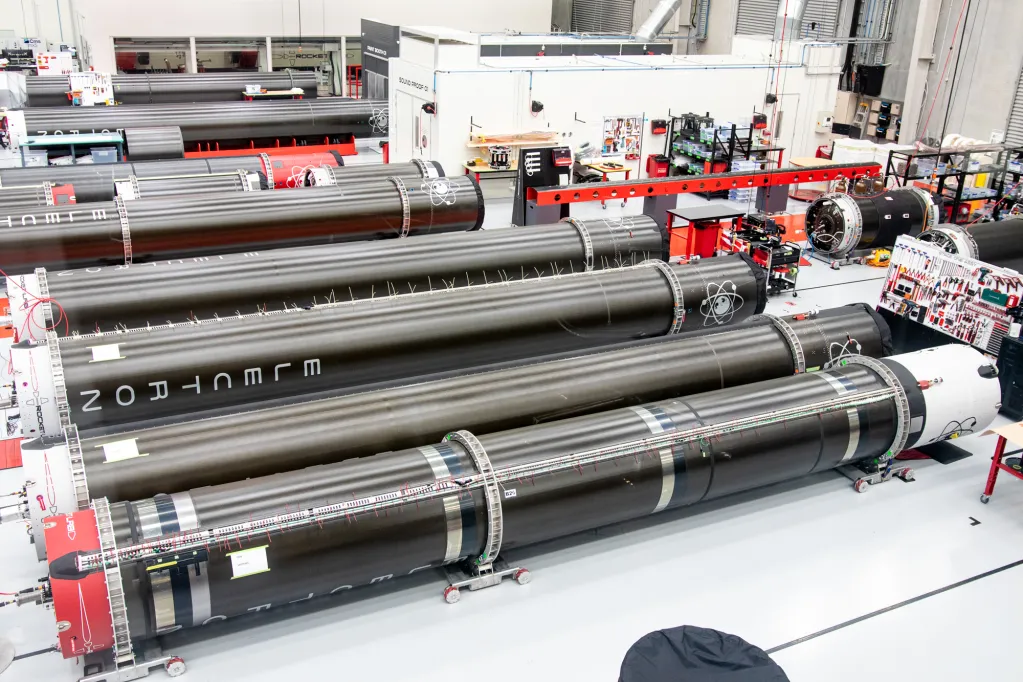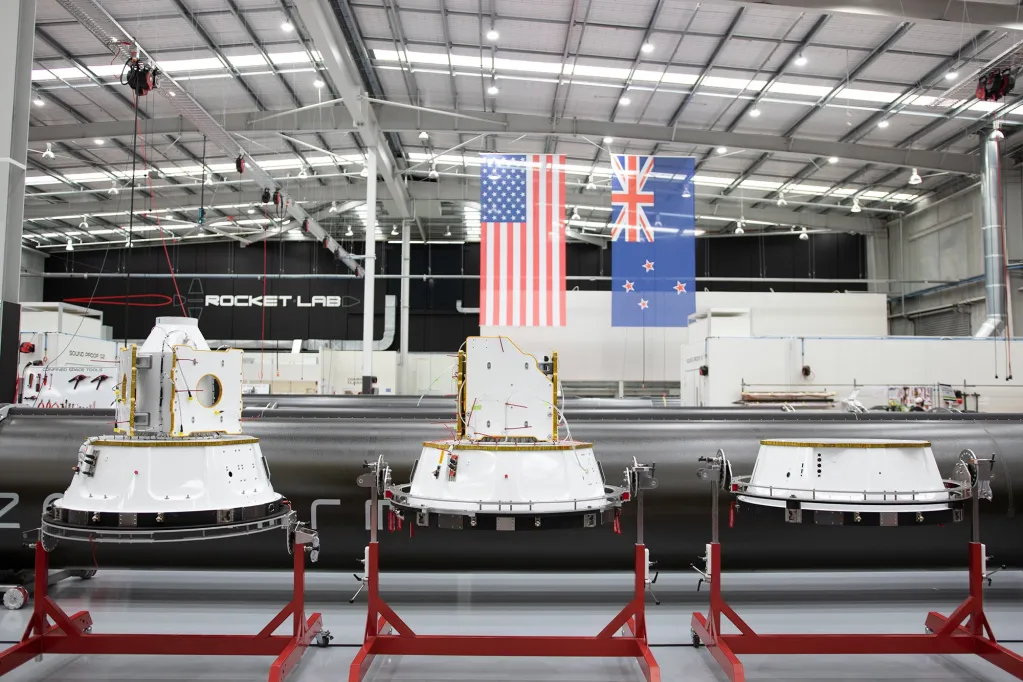Featured image credit: Rocket Lab
Launch Time | May 26, 2023 – 03:46 UTC | 15:46 NZST |
|---|---|
Mission Name | TROPICS-3, NASA’s third and final TROPICS mission |
Launch Provider | Rocket Lab |
Customer | NASA |
Rocket | Electron |
Launch Location | Launch Complex-1B, Māhia Peninsula, New Zealand (quickest turnaround time of the pad at 14 days) |
Payload mass | 10.68 kg (2x 5.34 kg) – 23.6 lb (2x 11.8 lb) |
Where did the payload go? | To a 550 km low Earth orbit (LEO) at 32° inclination |
Did they attempt to recover the first stage? | No, Rocket Lab didn’t plan to recover Electron on this mission |
Where did the first stage land? | The first stage crashed into the Pacific Ocean |
Did they be attempt to recover the fairings? | No, this is not a capability of Electron |
Were these fairings new? | Yes |
This was the: | – 5th Rocket Lab launch of 2023 – 3rd launch from Launch Complex-1B – 37th Electron launch – 77th orbital launch attempt of 2023 |
Where to re-watch? | Official livestream |
How Did It Go?
Rocket Lab successfully launched its next payload to space on its Electron. TROPICS-3 launched two more TROPICS 3U CubeSats into a 550 km LEO for NASA. This launch was Rocket Lab’s third launch from Launch Complex 1 on the Māhia Peninsula in New Zealand and its fifth launch in 2023. Coming To A Storm Near You, or TROPICS-3 was NASA’s third and final TROPICS mission after TROPICS-1 failed to reach orbit on Astra’s Rocket 3.3 back in June 2022 and the successful launch of TROPICS-2 just 18 days earlier on another Electron rocket from the same launch pad.

TROPICS
The Time-Resolved Observations of Precipitation structure and storm Intensity with a Constellation of Smallsats (TROPICS) mission will gather microwave measurements of Earth’s troposphere to study its thermodynamics and the precipitation structure of storm systems. TROPICS satellites will be placed in three different planes over the tropics to observe storm systems at the mesoscale and synoptic scale for the entire life cycle of aforementioned storms.

This constellation will offer a combination of horizontal and temporal resolution for observing and measuring environmental and inner-core conditions of tropical cyclones nearly globally. TROPICS will significantly improve temporal resolution compared to already existing observing systems when it comes to studying high-impact meteorological events.
The TROPICS constellation was supposed to consist of six identical 3U CubeSats that would have launched on Astra’s TROPICS-1 through TROPICS-3 missions. After TROPICS-1 failed to reach orbit and Astra’s retirement of their Rocket 3, TROPICS-2 and TROPICS-3, also known as Rocket Like A Hurricane and Coming To A Storm Near You, were launched on Rocket Lab’s Electron Rocket. Both Rocket Like A Hurricane and Coming To A Storm Near You launched in Q2 of 2023 in time for the North American hurricane season of 2023.
TROPICS-03 & TROPICS-07
TROPICS-03 and TROPICS-07 are two identical dual-spinning 3U CubeSats on board Rocket Lab’s Electron and the TROPICS-3 mission. Each TROPICS satellite is equipped with a 12-channel passive microwave spectrometer for observations near 90 and 205 GHz, and temperature and moisture sounding at 118 GHz and 183 GHz respectively.
2U of the 3U satellite are comprised of a spacecraft bus by Blue Canyon Technologies with an Attitude Determination and Control System (ADCS), communications, avionics, and power. The top 1U consists of a rotating radiometer payload with integrated microwave receiver electronics designed by the Lincoln Laboratory at MIT. Furthermore, each satellite is equipped with a deployable articulating 5-panel solar array.

Coming To A Storm Near You Mission Timeline
Pre-Launch
| Hrs:Min:Sec From Lift-Off | Events |
| – 06:00:00 | Road to the launch site is closed |
| – 04:00:00 | Electron is raised vertical, fueling begins |
| – 02:30:00 | Launch pad is cleared |
| – 02:00:00 | LOx load begins |
| – 02:00:00 | Safety zones are activated for designated marine space |
| – 00:30:00 | Safety zones are activated for designated airspace |
| – 00:18:00 | GO/NO GO poll |
| – 00:02:00 | Launch auto sequence begins |
| – 00:00:02 | Rutherford engines ignite |
Launch
| Hrs:Min:Sec From Lift-Off | Events |
| 00:00:00 | Liftoff |
| +00:01:00 | Vehicle Supersonic |
| +00:01:11 | Max-Q |
| +00:02:29 | Main Engine Cut Off (MECO) on Electron’s first stage |
| +00:02:33 | Stage 1 separates from Stage 2 |
| +00:02:36 | Electron’s Stage 2 Rutherford engine ignites |
| +00:03:08 | Fairing separation |
| +00:06:52 | Battery hot-swap |
| +00:09:27 | Second Engine Cut Off (SECO) on Stage 2 |
| +00:09:31 | Stage 2 separation from Kick Stage |
| +00:31:00 | Kick Stage Curie engine ignition |
| +00:33:40 | Curie engine cut off |
| ~+00:33:45 | Payload deployed |
What Is Electron?
Rocket Lab’s Electron is a small-lift launch vehicle designed and developed specifically to place small satellites (CubeSats, nano-, micro-, and mini-satellites) into LEO and Sun-synchronous orbits (SSO). Electron consists of two stages with optional third stages.
Electron is about 18.5 meters (60.7 feet) in height and only 1.2 meters (3.9 feet) in diameter. It is not only small in size, but also light-weight. The vehicle structures are made of advanced carbon fiber composites, which yields an enhanced performance of the rocket. Electron’s payload lift capacity to LEO is 300 kg (~660 lbs).

The maiden flight It’s A Test was launched on May 25, 2017, from Rocket Lab’s Launch Complex-1 (LC-1) in New Zealand. On this mission, a failure in the ground communication system occurred, which resulted in the loss of telemetry. Even though the company had to manually terminate the flight, there was no larger issue with the vehicle itself. Since then, Electron has flown a total of 36 times (33 of them were fully successful) and delivered 161 satellites into orbit.
First And Second Stage
| First Stage | Second Stage | |
|---|---|---|
| Engine(s) | Nine Rutherford engines | A single vacuum optimized Rutherford engine |
| Thrust Per Engine | 24 kN (5,600 lbf) | 25.8 kN (5,800 lbf) |
| Specific Impulse (ISP) | 311 s | 343 s |
Electron’s first stage is composed of linerless common bulkhead tanks for propellant, and an interstage, and powered by nine sea-level Rutherford engines. The second stage also consists of tanks for propellant (~2,000 kg of propellant) and is powered by a single vacuum optimized Rutherford engine. The main difference between these two variations of the Rutherford engine is that the latter has an expanded nozzle that results in improved performance in near-vacuum conditions.
For the Love At First Insight mission, the company introduced an update to the second stage by stretching it by 0.5 m. Moreover, they flew an Autonomous Flight Termination System (AFTS) for the first time.
Rutherford Engine
Rutherford engines are the main propulsion source for Electron and were designed in-house, specifically for this vehicle. They are running on rocket-grade kerosene (RP-1) and liquid oxygen (LOx). There are at least two things about the Rutherford engine that make it stand out.

Firstly, all primary components of Rutherford engines are 3D printed. Main propellant valves, injector pumps, and engine chamber are all produced by electron beam melting (EBM), which is one of the variations of 3D printing. This manufacturing method is cost-effective and time-efficient, as it allows to fabricate a full engine in only 24 hours.
Rutherford is the first RP-1/LOx engine that uses electric motors and high-performance lithium polymer batteries to power its propellant pumps. These pumps are crucial components of the engine as they feed the propellants into the combustion chamber, where they ignite and produce thrust. However, the process of transporting liquid fuel and oxidizer into the chamber is not trivial. In a typical gas generator cycle engine, it requires additional fuel and complex turbo-machinery just to drive those pumps. Rocket Lab decided to use battery technology instead, which allowed eliminating a lot of extra hardware without compromising the performance.
Different Third Stages
Kick Stage
Electron has optional third stages, also known as the Kick Stage, Photon, and deep-space version of Photon. The Kick Stage is powered by a single Curie engine that can produce 120 N of thrust. Like Rutherford, it was designed in-house and is fabricated by 3D printing. Apart from the engine, the Kick Stage consists of carbon composite tanks for propellant storage and 6 reaction control thrusters.

The Kick Stage in its standard configuration serves as in-space propulsion to deploy Rocket Lab’s customers’ payloads to their designated orbits. It has re-light capability, which means that the engine can re-ignite several times to send multiple payloads into different individual orbits. A recent example includes Electron 19th mission, They Go Up So Fast, launched in in 2021. The Curie engine was ignited to circularize the orbit, before deploying a payload to 550 km. Curie then re-lighted to lower the altitude to 450 km, and the remaining payloads were successfully deployed.
Photon And Deep-space Photon
Rocket Lab offers an advanced configuration of the Kick Stage, its Photon satellite bus. Photon can accommodate various payloads and function as a separate operational spacecraft supporting long-term missions. Among the features that it can provide to satellites are power, avionics, propulsion, and communications.

But there is more to it. Photon also comes as a deep-space version that will carry interplanetary missions. It is powered by a HyperCurie engine, an evolution of the Curie engine. The HyperCurie engine is electric pump-fed, so it can use solar cells to charge up the batteries in between burns. It has an extended nozzle to be more efficient than the standard Curie, and runs on some “green hypergolic fuel” that Rocket Lab has not yet disclosed.





